Types of truck driving jobs
There are heaps of career options as a driver, but if you want to focus on being a truck driver, here are the different types of driver assignment that you’ll come across in Australia.
Location-to-location or local drivers generally carry less than a full truck load and perform local deliveries, often broken into several locations. Courier drivers and delivery drivers fall into this category.
Short haul and regional drivers drive within the state and may be away overnight sometimes.
Long haul or interstate drivers cover thousands of kilometres across the country and may be away for weeks or months, depending on the assignments. Sometimes long haul drivers drive as a team (e.g. husband and wife) so that more distance can be covered at a time, and this keeps the truck working more efficiently. You might see the term line haul used, and this means a route that is point-to-point with no stops in between.
If you don’t have a full licence yet you might be able to get a job as a shunter driver. Shunter drivers only work on a company’s yard or depot, moving trucks and trailers around; they don’t need to drive on the road.
Heavy vehicle driving instructors teach others how to drive heavy vehicles.
How do you get a job as a truck driver?
There are six ways:
- You get a job within a company that you’re doing other work for (e.g. mechanic): this means that the company trusts you and are probably taking an interest in your ongoing training and career
- You know someone at a company that’s looking for a driver: who you know is important, and a warm lead or an introduction can mean you bypass the rest of the candidates
- You apply through an agency: agencies can place drivers either short-term or long-term and may have access into companies that it’s difficult for you to get to
- You apply through a job website or job ad in a newspaper: follow the instructions and hope to hear back
- You approach the company directly: this is the best way, if you can. Try to talk to the person who will be responsible for the hiring and explain why you are keen for the job (more on this below)
- You start your own company: this is the hardest way, but you can make the most money. You will have to win contracts and own (or lease) your own truck.
How do you get paid?
Long haul drivers and those with very specialist skills tend to be paid the most, while local delivery drivers tend to be paid the least.
There are a few ways that your pay could be structured:
- Per kilometre – you get paid for the kilometres completed. Usually this is known because the route is known, but in some cases the distance is calculated as a straight line which doesn’t favour the driver.
- Paid by the load – you get paid for delivering a specific load. This is the preferred method. Drivers can also arrange additional pickups along the way (if possible) to earn more money. Drivers can negotiate extra pay for difficult loads (e.g. loads that require special attention when loading, or driving them), difficult routes and urgent deliveries. Make sure you agree on payment timeframes as you will have upfront costs like fuel, and you don’t want to be waiting 60 days to get paid.
- Paid by the hour – you only get paid for the hours you drive (possibly including delivery and loading time)
- Salaried employee – you get paid a fixed amount per year, regardless of how much you drive. This type of job might have a component that is non-driving-related, depending on the size and type of company you work for.
Starting your own company
If you want to build something bigger, or just have the flexibility to work when you want, you can start your own company. You will have to do all the administration, accounts and general business tasks as well as win contracts and drive, so don’t think this is the easy option. However, if you are successful you can earn much more than being on a salary.
If you are doing this, start with one truck in a niche you understand (or have contacts in), and then build within that niche. Having a niche operation means you will get to know that particular part of the industry in-depth, you’ll know all the people, you’ll have specialist equipment and you can be more efficient. Examples of niches are hauling boats or hauling livestock. It’s better to have three boat haul trucks and be the best at that so that everyone calls you than one tipper, one tanker and a logging truck where you’ll have lots of different types of customers and you won’t be able to get the efficiency required.
Working as a truck driver for another company
Applying for a job
Jobs will be advertised with a description of the role. It could include:
- Hourly rate or salary
- Working hours (e.g. regular, shift)
- Type of licence you’ll need
- Type of truck you’ll be driving
- What load(s) you’ll be carrying
- What type of job it is, e.g. line haul, round, etc
- Whether you need any special accreditation, training or skills (e.g. dangerous goods)
- Whether you will be responsible for anything else in the company other than driving, e.g. managing the yard
You’ll need a CV with:
- Your name and contact details clearly stated
- Your work history
- Any additional skills you offer (see below)
- Any restrictions on your driver licence (best to be honest if you have points on it)
A personal introduction or relationship with the person doing the hiring is infinitely better than sending a CV cold, so try to contact the right person if possible.
What is an employer looking for?
- Good English communication with the ability to do basic maths and fill out forms accurately
- Customer-first attitude as you’ll be representing the company when delivering or picking up goods
- Ability to work unsupervised for long periods of time, but also be part of a team
- Ability to solve problems – particularly important if you’re trucking through the outback
- Health and safety knowledge
- Punctuality – if you’re late, that says a lot about your work ethic
- Planning and organisational abilities
- Calmness when things start to go wrong
- Courteous, safe and economical driving – you’re representing the company out on the road
How to convince an employer you are the best driver for their team
The list above outlines what employers are looking for, but you can go extra steps, or you might have additional beneficial knowledge:
- You can bring clients to the business (make sure you’re not contravening any previous contracts)
- You are respectful: never, ever, ever badmouth your current boss to a new boss. Ever. When you get asked why you are leaving, you need to have a genuine reason that doesn’t include the sentence “because my boss is a dick”. The new boss will judge you based on your attitude about your old boss. Reasons could be simply that you’ve been there several years and it’s time for a change.
- You can do maintenance on the trucks
- You take pride in your vehicle (turning up to the interview in a dirty car won’t convince them of this)
- You’re happy to work unpopular shifts, or to fill in for absences
- You have done advanced driver training or other vocational courses
- You can drive other vehicles, e.g. a forklift
- You’re interested in something the company supports such as a charity or local sports team, and can help out.
Tasks you’ll do as a lorry driver
As well as driving, there are many other tasks:
General maintenance and checks
While a large company might employ an on-site mechanic to take care of maintenance, it’s the driver’s responsibility to check the fluids, tyres, brakes and safety equipment.
Completing your log book and delivery paperwork
It’s a legal requirement to fill in your log book. In order to accurately track deliveries (and therefore be able to invoice for them) all paperwork must be filled out. There may be compliance requirements to adhere to.
Planning schedules and driving routes
Along with the transport manager you can plan the best route for your deliveries. This may involve avoiding low bridges or other obstacles. The route plan should attempt to be as economical as possible, avoid stressing the driver and vehicle, and get the delivery there on-time.
Assisting in loading, securing and unloading goods
The driver is responsible for the load, so you need to make sure it goes on and off the truck properly. Some loads require specific knowledge, e.g. flammable liquids, cars, etc.
Dangers of driving a heavy vehicle
This article explains the health risks associated with being a heavy vehicle driver. There are issues with sleep disorders and sleep deprivation which can cause risks for drivers.
Other dangers are:
- Hearing damage through long periods in a noisy cab
- Musculoskeletal issues through long periods exposed to vibration, plus long periods sitting down
- Weight gain and loss of fitness due to long periods spent sitting down
- Exposure to fumes when driving in urban areas
- Higher risk of falling asleep at the wheel if driving shifts or on monotonous routes with little variation in scenery
- Risk of back troubles through heavy lifting
Truck driver slang
Like any occupation, truck driving has a set of slang terms that truckers use between themselves. For example candy car (police car), flash for cash (speed camera), and turd herder (cattle truck). You can find a more comprehensive (and amusing) list here.
Different types of trucks
If you want to see lots of different types of trailers, this website has loads for sale.
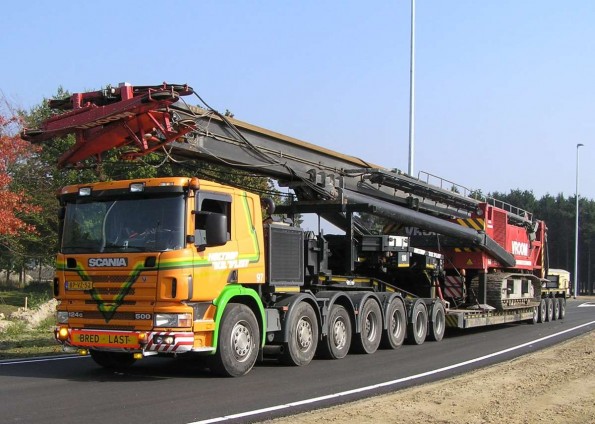
Heavy crane being transported on a lowboy trailer
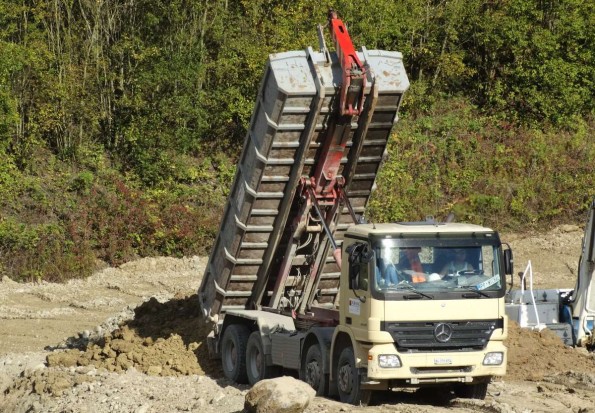
Tipper truck delivering its load

Road train
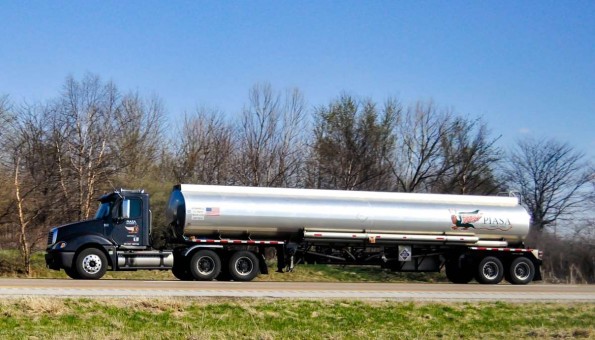
Tanker truck
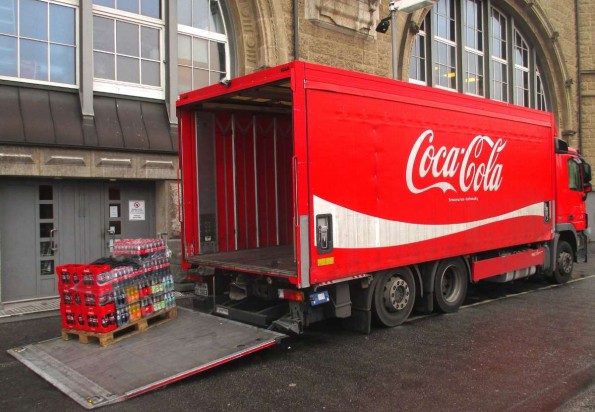
Rigid delivery truck with rear hoist
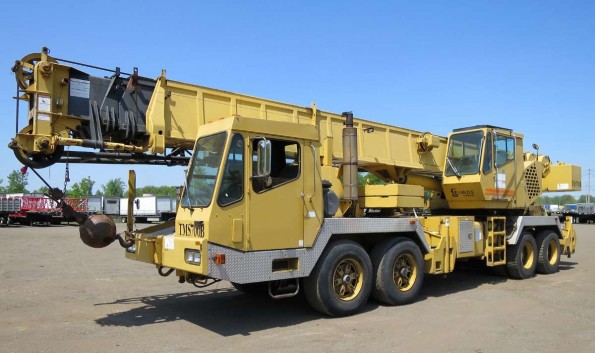
Crane

Concrete mixer
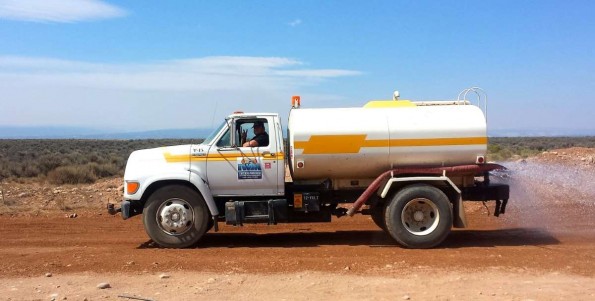
Water tanker truck
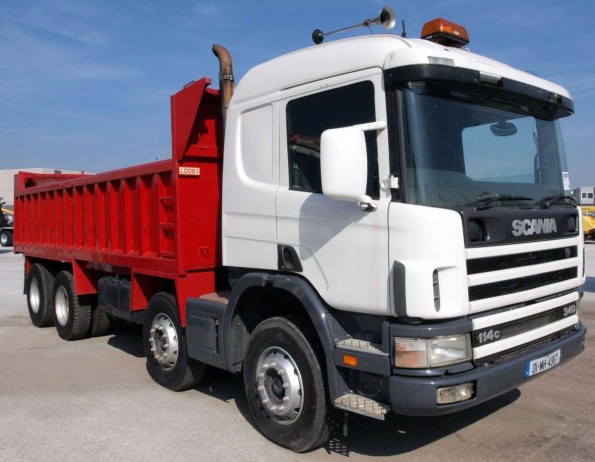
Rigid top load truck

Livestock truck
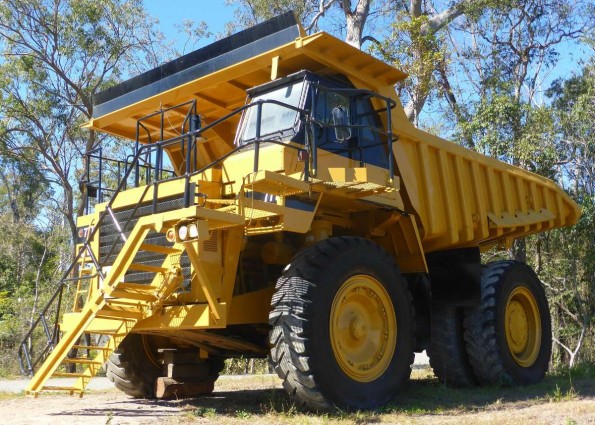
Mining dump truck
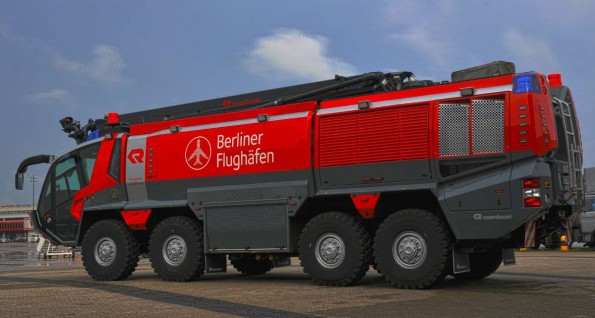
Airfield fire truck
